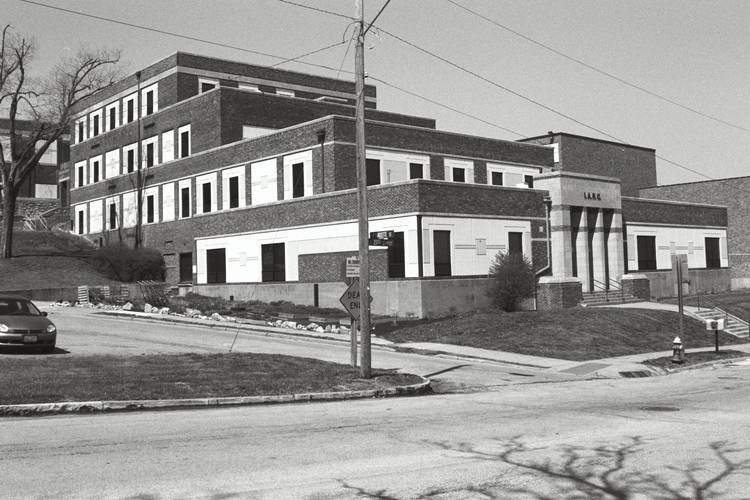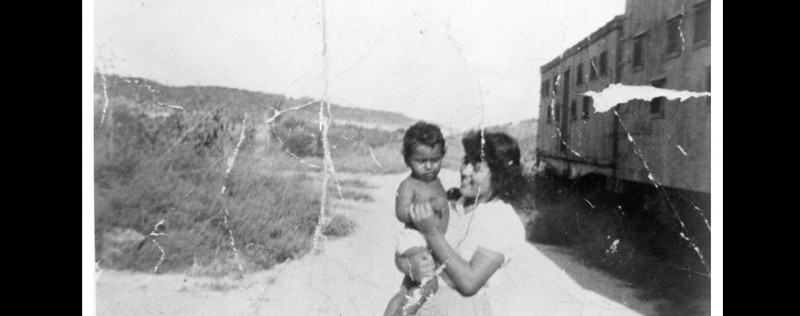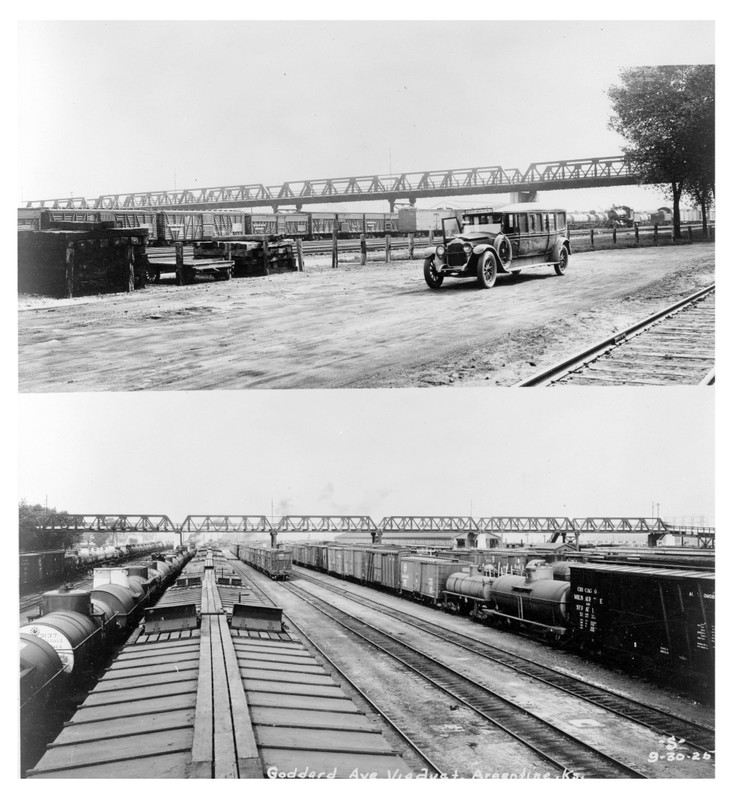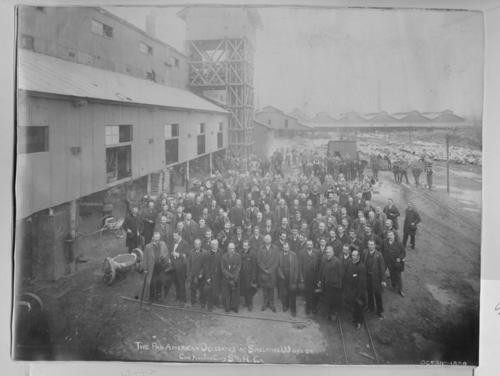Argentine High School (1908)
Introduction
Text-to-speech Audio
Founded in 1884, Argentine High School began as a department for older children within Lowell Grade School, which operated at Elmwood near the southeast corner of 2nd street in Argentine. By the fall of 1889, the high school department operated within two rooms upstairs in the Bruce Grade School on Strong Avenue and 4th Street. At that time, the Bruce School's first floor served African American grade school children as racial segregation was common in Kansas schools up to the high school level at that time. The school's enrollment growth mirrored that of the town of Argentine, and soon, a dedicated school was necessary to house the growing student population. The permanent structure of Argentine High School was finished in 1908 and is now currently the site of Argentine Middle School.
Images
Argentine High School

Woman and her child outside the boxcar where they lived

Two photographs of the viaduct at Goddard Viaduct in Kansas City, Kansas.

Consolidated Kansas City Smelting and Refining Company (1889)

Backstory and Context
Text-to-speech Audio
The town of Argentine was established in 1880 and was the headquarters of the Kansas City Consolidated Smelting and Refining Company. The connection between the plant and the smelting operation can be seen in the name Argentine, which is derived from the Latin word for silver. The plant was the largest in the world in terms of capacity at the time, and a settlement quickly grew up around the smelter as well as the railroad, which had been completed in the late 1870s. The smelter plant shut down in October 1901 leading to a local economic depression as hundreds left the community to find work elsewhere. Due to these conditions and the growth of the neighboring metropolitan area, city officials and residents welcomed annexation into the city of Kansas City, Kansas. On January 1st, 1910, Argentine officially became the 7th ward of KCK.
Argentine High Schools was considered one of the most prestigious schools in the state in the 1930s, as it had a vocational-technical program that started at the high school. The current structure at 22nd and Ruby is also home to a fight for integration in schools 29 years before Brown v. Board. In 1925, four Mexican students- including two brothers and their parents, fought to attend the all-white Argentine High School. Jesus and Luz Alvarado, Marcos De Leon, and Victorina Perez graduated from Clara Barton grade school and subsequently enrolled at Argentine High. After one week of classes, white parents began to threaten the Mexican American community if they did not withdraw their children. Mexican parents began their fight to integrate the school. Kansas City was the only school district that was legally allowed to have segregated high schools. The district had a separate high school for Black students and a segregated Mexican middle school. Due to the low number of Mexican Americans/Mexicans in the Kansas City area prior to 1925, there was not a designated separate high school for Latinx children. Instead, there were separate classrooms designated for Latinx students. The Argentine school district went so far as to offer to pay the tuition and transportation for the four Mexican students if they would agree to attend a segregated high school in Kansas City, Missouri. The parents refused again and filed a complaint with the Mexican Consul. The Consul put pressure on the school board, and ultimately it could not force segregation. White parents continued to threaten the Mexican students and their community. No legal cases were pursued against the white parents that threatened violence and they were never charged. After a year away from school in the fight for integration, the Mexican students were re-enrolled for the 1926-1927 school year. In the years that followed, the community saw a decrease in white families and the growth of Mexican American communities that continue to shape the school and community.
Sources
Edwin Dale Shutt II, “ ‘Silver City,’ A History of the Argentine Community of Kansas City, Kansas,” Master’s thesis., (Emporia State College, 1974).
Argentine High School, Kansas Historical Society, Topeka, Kansas. https://www.kshs.org/kansapedia/argentine-high-school/16694
Goddard Avenue Viaduct, Kansas Historical Society, Topeka, Kansas. https://pendergastkc.org/collection/8807/khs-448273-0001/goddard-avenue-viaduct
Mary Franz and Child, Kansas Historical Society, Topeka, Kansas. https://pendergastkc.org/collection/8807/khs-304205-0005/mary-franz-and-child
Consolidated Kansas City Smelting and Refining Company, Missouri Valley Special Collections, Kansas City, Missouri.
Kansas Historical Society
Kansas Historical Society
Kansas Historical Society
Missouri Valley Special Collections
